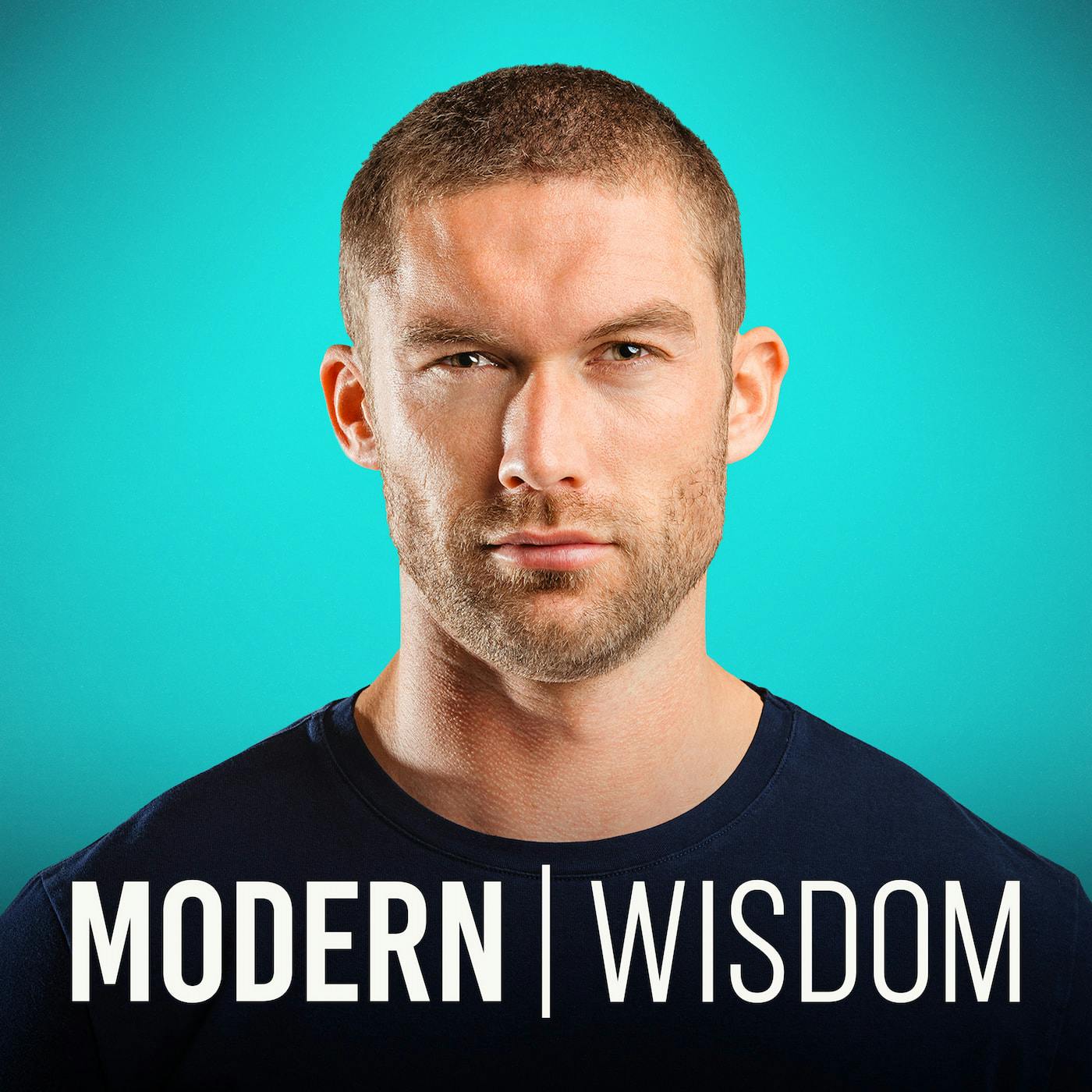
#876 - Michael Gelb - How To Think Like Leonardo da Vinci

Modern Wisdom
Deep Dive
Why would anyone want to think like Leonardo da Vinci?
Da Vinci epitomizes the phenomenal, unlimited human potential. Learning to think like him offers a manual for utilizing our incredible brains by emulating history's greatest genius.
What was Da Vinci's demeanor like?
Da Vinci was charming, funny, elegant, and enjoyed dressing well in fine fabrics. He was a musician with a gift for connecting with others, which helped him secure high-level patrons.
How did the political and cultural landscape of Italy shape Da Vinci?
Political turmoil caused Da Vinci to relocate, seeking patronage from figures like Ludovico Sforza, Duke of Milan. He adapted his skills to meet the needs of his patrons, highlighting his military engineering prowess alongside his artistic abilities.
Did Da Vinci see his artistic endeavors as secondary?
Da Vinci prioritized his patrons' needs, often emphasizing his engineering skills over his artistic talents. However, his true passion was understanding the nature of reality, using both art and science as tools for exploration. He considered art and science as interconnected ways to explore truth, beauty, and goodness.
What was the "dark side" of Da Vinci?
Da Vinci was sometimes criticized for not finishing projects, possibly due to his pursuit of perfection or a lack of concern for deadlines. He also experienced periods of self-doubt, questioning his accomplishments despite his significant contributions.
What is a lesser-known accomplishment of Da Vinci?
Years before Copernicus, Da Vinci wrote "Il sole no si muove" ("The sun does not move"), suggesting a heliocentric understanding of the solar system.
What did a typical day look like for Da Vinci?
Da Vinci worked with intense focus, followed by breaks in nature. He recorded his observations and ideas in his notebooks, which were filled with messy notes and creative doodles.
What are the seven principles for thinking like Da Vinci?
The seven principles are: 1. Curiosità (unrelenting curiosity), 2. Dimostrazione (testing knowledge through experience), 3. Sensazione (sharpening the senses), 4. Sfumato (embracing ambiguity), 5. Arte/Scienza (integrating art and science), 6. Corporalità (balancing mind and body), and 7. Connessione (recognizing the interconnectedness of all things).
How can one cultivate Curiosità?
One can cultivate Curiosità by continually asking questions, especially "why" questions, like a child. A practical exercise is writing 100 questions in one sitting, identifying the most powerful ones, and reflecting on them before sleep.
What is Dimostrazione?
Dimostrazione involves testing knowledge through personal experience and critical thinking, rather than blindly accepting authority. It encourages a balance between open-mindedness and skepticism.
How can one practice Sensazione?
Sensazione involves consciously sharpening sensory awareness. This can be done through mindful observation of nature, comparative tasting, engaging with art, and paying attention to subtle details in everyday experiences.
What is Sfumato?
Sfumato is embracing ambiguity and uncertainty. It's exemplified by the Mona Lisa's mysterious smile and encourages emotional intelligence, connection to higher principles, and a sense of humor during challenging times.
What is Arte/Scienza?
Arte/Scienza is the integration of art and science, logic and imagination. Mind mapping is a practical technique for implementing this principle.
What is Corporalità?
Corporalità emphasizes the balance of body and mind through physical fitness, a healthy diet, mindful movement, and cultivating grace and poise.
What is Connessione?
Connessione is recognizing the interconnectedness of all things, similar to systems thinking. It involves considering the bigger picture and potential consequences of actions.
- Da Vinci was charming, funny, elegant, and a musician.
- He charmed high-level patrons to secure his career.
- Political turmoil in Italy influenced his career moves and opportunities.
- Da Vinci's employment application letter to Ludovico Sforza is considered the most famous one of all time.
- Da Vinci's artistic endeavors were a part of his broader quest to understand the mind of God.
- Michelangelo and Da Vinci represented different aspects of the human quest for self-expression and achievement.
Shownotes Transcript
Michael Gelb is an executive coach, speaker, and an author.
Given that Leonardo da Vinci is one of history’s greatest minds, presumably we can learn a lot from the life, lessons and background of him. Michael is one of the world's leading writers on the man and today we get to discover his 7 most important rules for thinking like Leonardo.
Expect to learn Leonardo da Vinci’s unique way of assessing problems, what Leonardo's demeanour was like as a person, if Leonardo was naturally gifted, what a typical day in the life of Leonardo was and his favourite type of working environment, the unreasonable standards that Leonardo held himself to, the 7 principles that Leonardo lived by and much more…
Sponsors:
See discounts for all the products I use and recommend: https://chriswillx.com/deals)
Get up to $50 off the RP Hypertrophy App at https://rpstrength.com/modernwisdom) (use code MODERNWISDOM)
Sign up for a one-dollar-per-month trial period from Shopify at https://shopify.com/modernwisdom)
Get the Whoop 4.0 for free and get your first month for free at https://join.whoop.com/modernwisdom)
Extra Stuff:
Get my free reading list of 100 books to read before you die: https://chriswillx.com/books)
Try my productivity energy drink Neutonic: https://neutonic.com/modernwisdom)
Episodes You Might Enjoy:
#577 - David Goggins - This Is How To Master Your Life: https://tinyurl.com/43hv6y59)
#712 - Dr Jordan Peterson - How To Destroy Your Negative Beliefs: https://tinyurl.com/2rtz7avf)
#700 - Dr Andrew Huberman - The Secret Tools To Hack Your Brain: https://tinyurl.com/3ccn5vkp)
Get In Touch:
Instagram: https://www.instagram.com/chriswillx)
Twitter: https://www.twitter.com/chriswillx)
YouTube: https://www.youtube.com/modernwisdompodcast)
Email: https://chriswillx.com/contact)
Learn more about your ad choices. Visit megaphone.fm/adchoices)